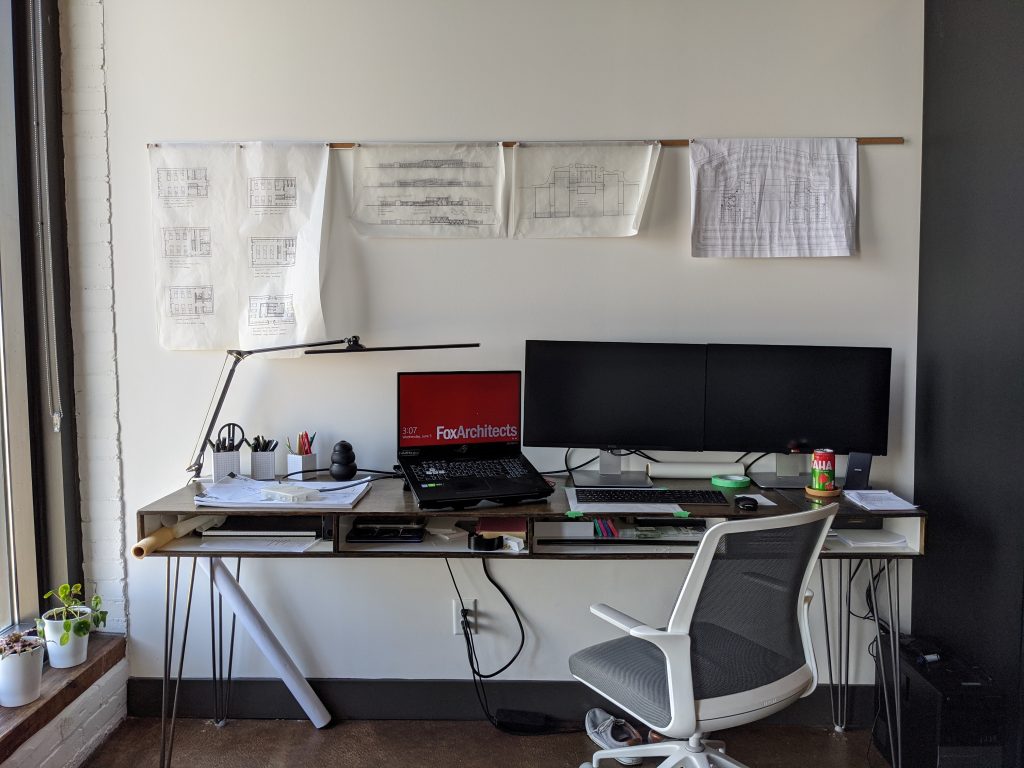
Flexibility: Remote Work & the Workplace
Content by Dani Sheley, NCIDQ
Flexibility. Balance. Alignment. Although these may sound like words to describe a yoga session, these words will define the post-COVID workplace. As discussed in previous blog posts, the requirements for the return to the physical work environment will require a balance of people working in the office and working from home.
Although the transition to working from home was abrupt for most companies, remote work is not a new concept. Most industries had the structure in place to make the transition smoothly, even if remote work was not fully integrated into their organization prior to the outbreak. Though more than half of U.S. employees hold jobs that could be performed in a “flexible workspace” such as at home, according to the Bureau of Labor Statistics only 7 percent were given the option prior to the outbreak.

With no vaccine available in the near future, COVID-19 has increased this percentage, perhaps permanently for some. Global Workplace Analytics, which has been studying remote work trends for more than a decade, predicts that 25-30 million U.S. employees will regularly work from home within the next two years compared to five million who currently do so at least half the time.
Pandemics are stressful. Whether due to concerns about pre-existing health conditions or an absence of childcare, many people cannot yet return to the workplace. Providing the choice of where and when to work provides a solution for both employees and companies: it decreases employee anxiety around returning to the workplace and allowing companies to put their employees’ needs first.
Is the workplace as we know it obsolete? Yes, but not in the way you may think. Organizations are realizing that the work performed matters more than where the work is performed. Over the last two months, the conversation has shifted from ‘when we get back to the office’ to ‘how do we go back to the office?’ Waking up every day to put on comfortable clothes, eat a quick breakfast with our family then make the leisurely commute to our home office was an adjustment from the usual hustle and grind of daily life.

However, this time away also gave most workers a new appreciation for the office environment, and the ways in which it is designed to encourage collaboration and communication. As design professionals, we gather to sketch, brainstorm, discuss, and strategize about ways to bring people together. Most of us missed our daily interactions with a cadre of like-minded individuals, which is why the workplace will never disappear. It serves as a place to meet, following social distancing recommendations, with each other.
To maintain productivity, successful organizations will alter the way in which the workplace is structured. Whether allowing people the choice of in-person or virtual meetings, beginning shift work or teaming days, organizations and leaders will need to be flexible. Efficiencies on scheduled time together or independent work apart will emerge and can be thoughtfully implemented. Personally, I am grateful to work for an organization that inherently understands effective workplace design and had already implemented tools to enable a successful transition to working remotely when the pandemic began.
The pandemic, coupled with the flexibility of remote work had an unexpected benefit. Generating a bit more time to explore personal passions, working from home provided employees with the opportunity to be inspired by and engaged by the current situation. Fox staff members found new outlets for their creativity by creating a virtual music series on Facebook or making masks for local healthcare workers. It also required all of us to make more of an effort to connect. Whether initiating conversations on Teams or playing virtual Pictionary every Friday afternoon, the Fox team has discovered new methods to keep social interactions alive.
When this conversation on a return to the office began six weeks ago, the focus was just that: a return. The three main considerations for returning to work remain flexibility, wellness, and building community. What at first appeared to be a reactionary measure, remote work is now an important component of our phased return to the workplace. By allowing employees to remain working from home, organizations can outline a plan for the reoccupation of the workplace while still following social distancing recommendations.
As people once again come together in a shared space, a renewed sense of community has emerged through resiliency and flexibility. Through patience and kindness. By focusing on people first.